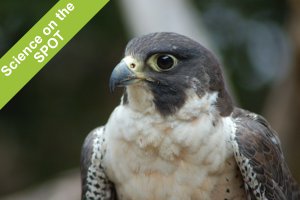 QUEST Science on the SPOT takes a close up look at the Peregrine Falcon.
QUEST Science on the SPOT takes a close up look at the Peregrine Falcon.
We walk through the Nature Trail near the San Francisco Zoo’s Koret Animal Resource Center. Owls, vultures, hawks and falcons sit perched on a grassy rise, admiring the people who walk by admiring them. The Animal Resource Center, or A.R.C., is home to the zoo’s educational outreach animals. And outside, a teen volunteer is talking to a group of younger kids and their parents about the Great Horned owl.
The zoo’s youth volunteer programs are training local teens to handle live animals from the educational outreach program and in addition the volunteers help educate zoo visitors about the life history of these animals and the conservation threats they face in the wild. For many of these kids this is a first step to a lifetime of environmental stewardship and a new-found love of science.
Each year over 130 local youths go through the zoo’s volunteer programs. The programs are designed to teach kids about conservation but most importantly they train the volunteers to pass on that knowledge. “Teaching city children about nature and the importance of habitat health not only to wild areas but to themselves as well.” said one volunteer program alumni, “I’ll never forget the faces of awe on both children and adults as they got to see, touch and learn about animals such as opossums, chinchillas and ferrets. It felt great to be able to provide such an experience to the visitors of the Nature Trail.”
